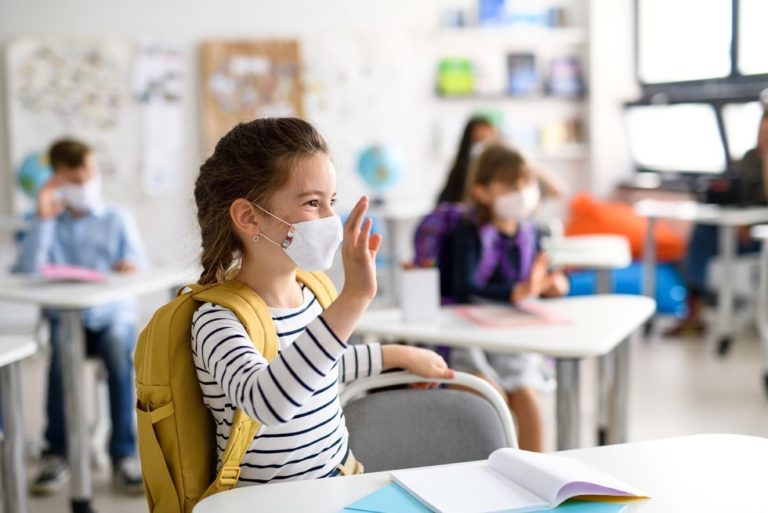Keeping Your Kids Healthy in the Classroom
September 14, 2021

School is back in session! For many students, that means meeting with up with teachers and friends in the classroom after a long time apart.
That’s exciting for both kids and parents — but it’s important to be ready for the return of coughs, sniffles, flu and more. Here’s what you need to know.
How germs and viruses can spread
It only takes a single child with a communicable virus to spread it throughout the school and your family. One sick student who coughs or sneezes without covering his or her mouth or nose can place surrounding children at risk!
Some germs and viruses can linger, even when a sick child is not present. The germs can remain on doorknobs, desks, pencils and food items from infected respiratory droplets and unwashed hands, which means extra cleaning and preventative steps might be necessary.
Protecting against COVID-19
As schools resume in-person classes, COVID-19 is having an impact on students. The impact can go far beyond one child — in some cases, classmates who might’ve had contact with them are told to quarantine as a precaution. So what can parents do? Here are key first steps:
Get vaccinated
The CDC recommends that everyone ages 12 and up be vaccinated against COVID-19. Vaccines are available at select CareSpot and MedPost clinics and at many other locations, such as pharmacies and community clinics.
Stay informed
The CDC recently announced that vaccinated people will soon need COVID-19 booster shots. Plans for the booster shots are still being developed, so keep an eye on CareSpot.com and MedPost.com for details.
Wear (and wash) your mask
In addition to vaccination, many schools and businesses are requiring people to wear masks in common areas — even if they are fully vaccinated.
Check your school district’s requirements and sign up for their email or text lists in case requirements change.
If your district does require masks, practice wearing them as a family. Especially with young children, make sure the mask completely covers the nose and mouth. And discuss what your children should do if their mask becomes broken, dirty or if they lose it.
Get tested when you need it
COVID-19 infections can occur even in people who are vaccinated and they are more likely in people who are not vaccinated.
Some COVID-19 symptoms (like headaches, fever and fatigue) can often appear to be similar to cold or flu. With all family members (not just kids!), keep an eye out for symptoms more commonly associated with COVID-19, such as shortness of breath or the loss of taste or smell.
If you spot COVID symptoms, visit an urgent care clinic near you for testing. You might need to call ahead or schedule your visit online to be seen, so make sure you know which clinic is near you now.
Protecting against the flu
In addition to protecting against COVID-19, a return to work and school means we’ll all need to be vigilant about flu. Flu vaccines for this year are not yet widely available but will likely be available soon, including at CareSpot and MedPost. Keep an eye on our website and your inbox for updates!
Other things you can do
Besides those two viruses, a number of other garden-variety illnesses could pop up during the school year. Here are top tips for preventing those:
Frequent hand-washing
Nothing works as well as antibacterial soap and water to remove germs, dirt and grime from exposed skin. Remember that many children do not wash their hands for as long as is necessary to thoroughly clean them.
Helpful hint: They should wash their hands for as long as is necessary to sing the Happy Birthday song two times! Hand-washing should be done before eating, as well as after playing outside, nose-blowing and using the toilet.
Use of an alcohol-based hand sanitizer
The hand sanitizer can be placed in a backpack or desk and can be used prior to eating, or after sharing pencils or a classroom computer or water fountain. Disinfecting wipes are also an excellent option when soap and water are not available.
Covering the nose or mouth when sneezing or coughing
Kids of all ages should cough or sneeze in the crook of their elbow when a tissue in unavailable. Otherwise, cough and sneeze into a tissue, throw it out and then wash hands.
Avoid sharing food, personal items and water bottles with others.
This is an easy way to avoid coming into contact with infected surfaces.
The past year has presented unique challenges for schools, students and parents everywhere. But there is quite a bit we can do to help progress keep moving forward. Following these tips can help you and your family get off to a successful start for the new academic year.
